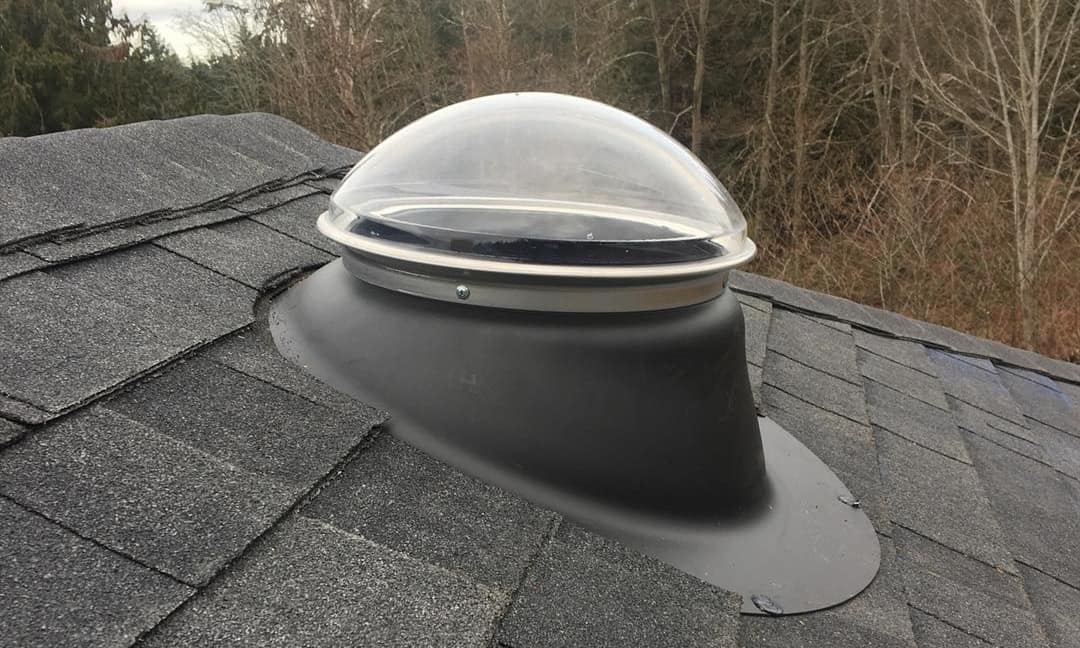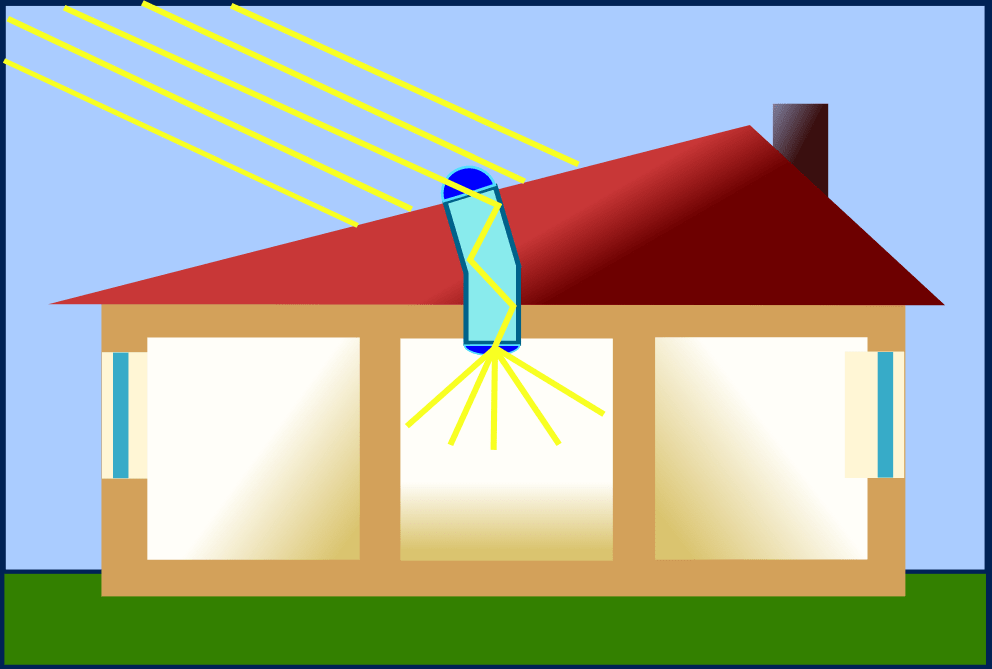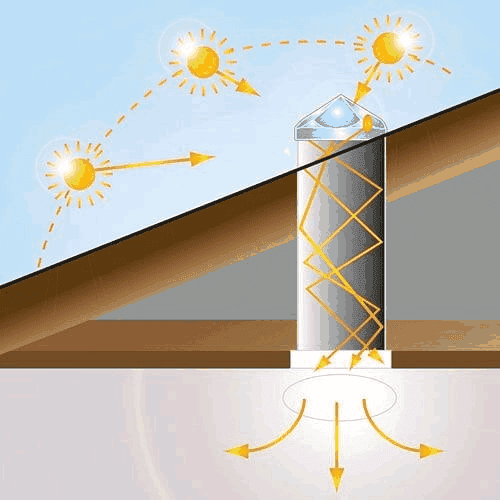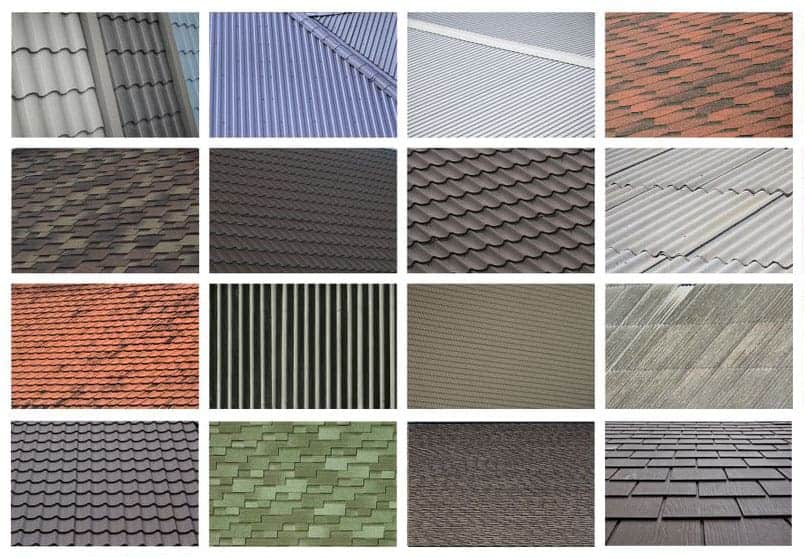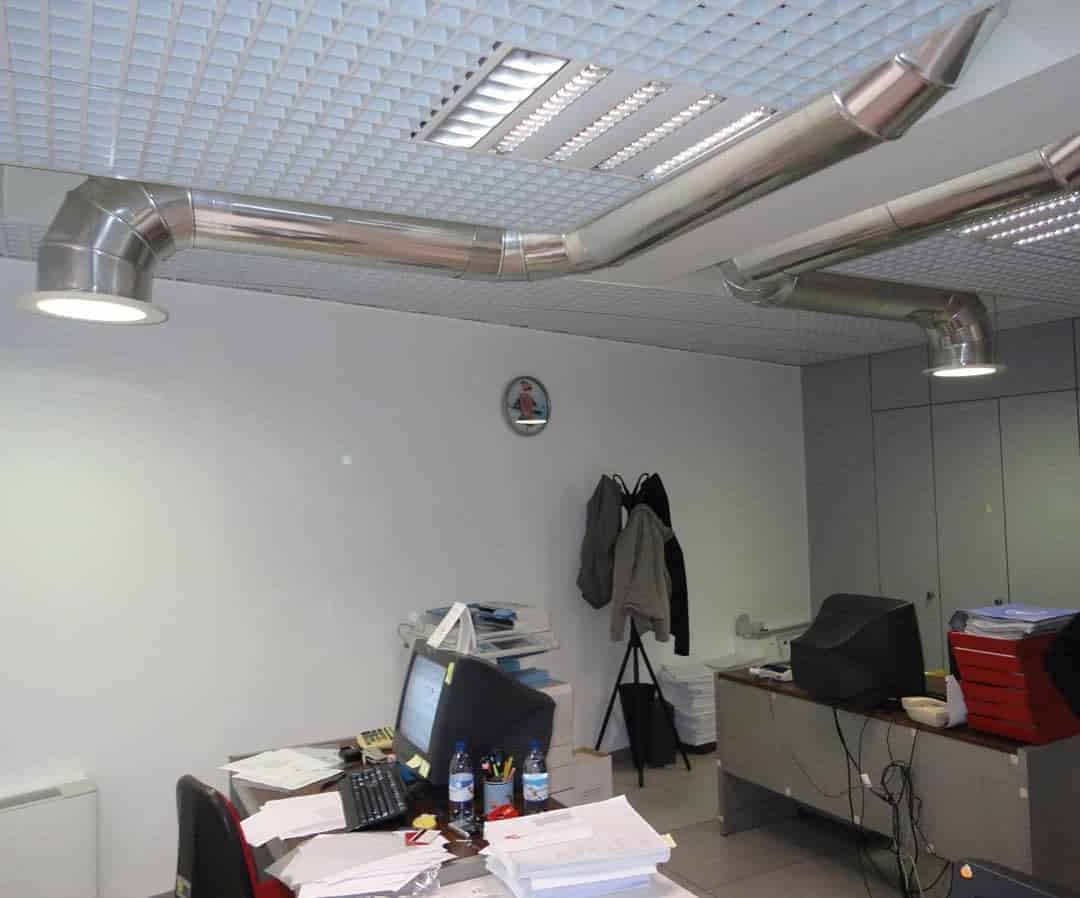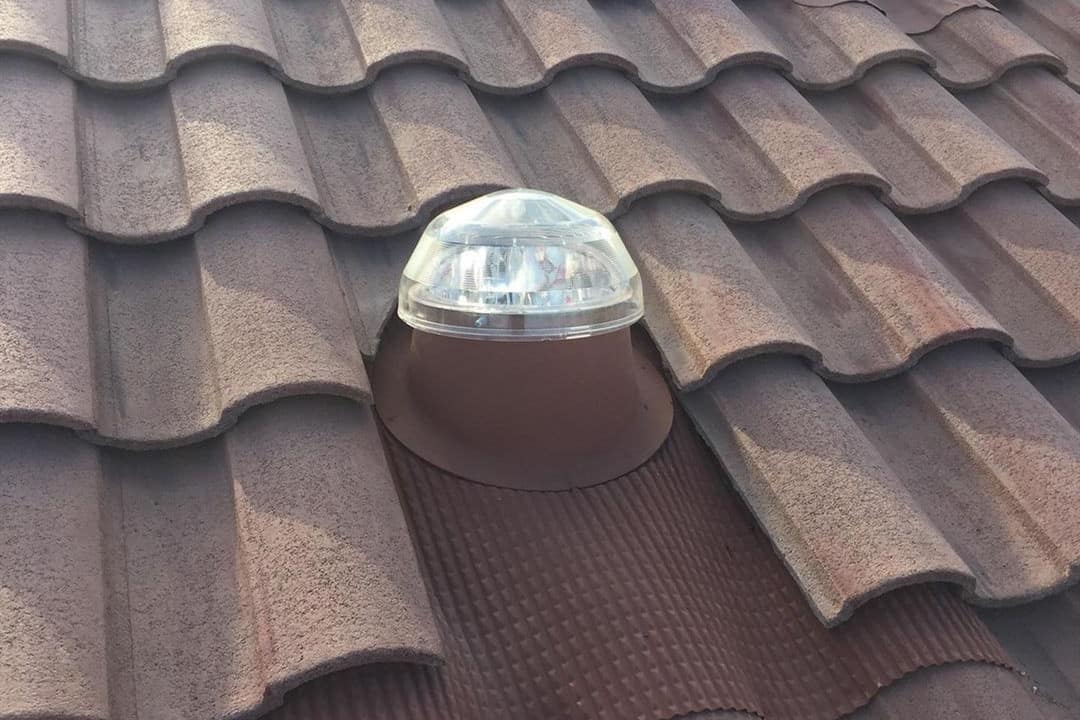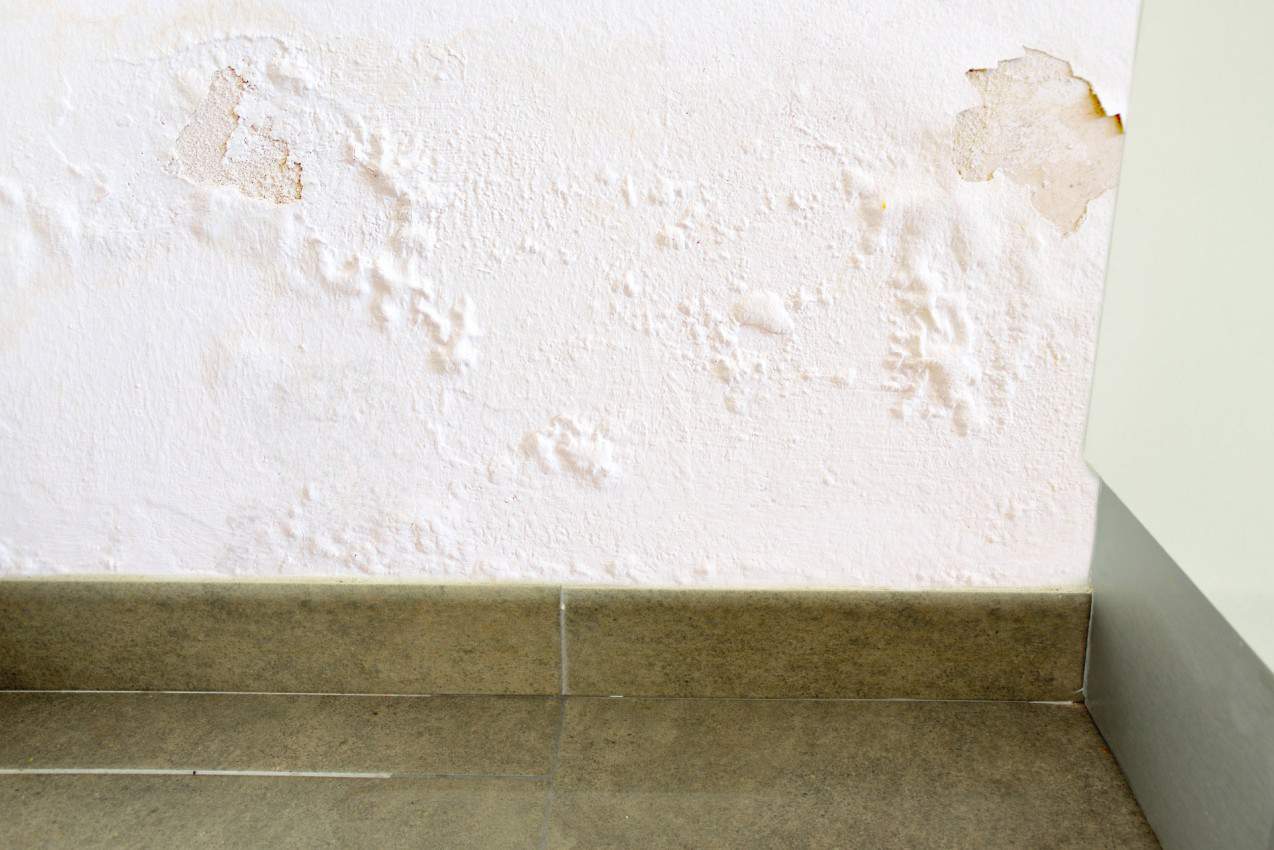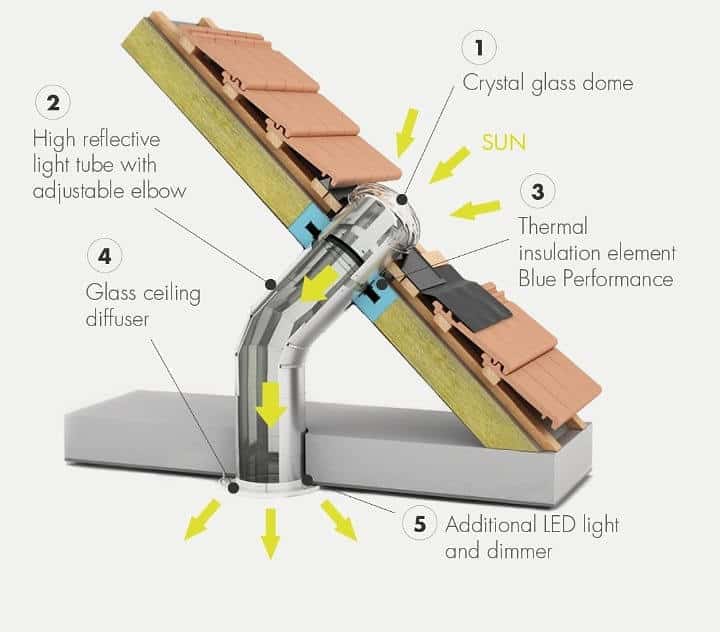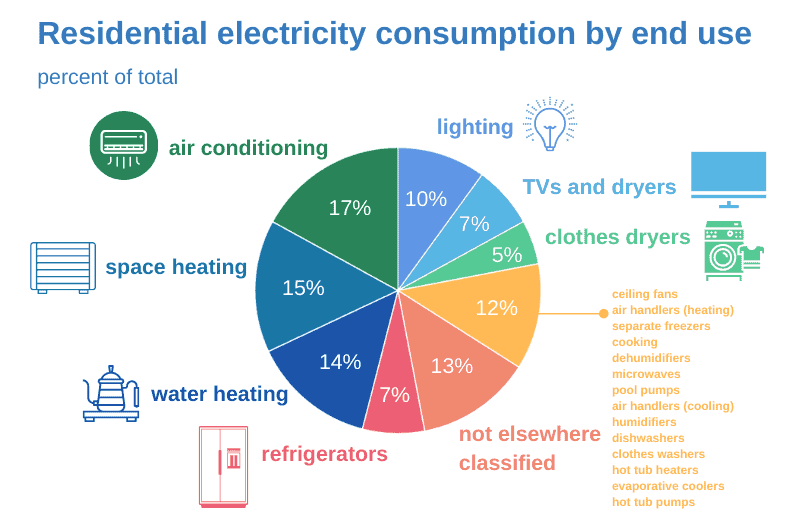There is a slew of reasons why the demand for solar tubes is on the rise these days. From the outset, solar tube lighting is the perfect solution if you want to brighten up your dark indoor spaces while keeping power costs low. This lighting system can fill artificial lighting shortcomings, allowing for an energy-efficient power supply, easy installation, and low overall cost.
But, what are the drawbacks to solar tube lighting? Before you dash out and shop for any solar tube out there, it would help if you got to know the drawbacks to solar tube lighting.
In this article, we cover all the drawbacks associated with solar tube lighting so that you know what to expect from it. For starters, you first need to understand what solar tube lighting is all about. So, buckle up, and let’s dive right in…
What Is Solar Tube Lighting?
Solar tubes go by many names. They’re also called sun tunnels, sun tubes, tubular skylights, light pipes, light tubes, or daylight pipes. Whatever you call it – solar tube lighting is where the sun is the only light source.
A metallic tube runs from your home’s roof through the ceiling to channel natural light into a dark or windowless room. An acrylic cap is fitted on the roof end of the tube to ensure water resistance. Then there’s a diffuser fitted into a round window-like opening on the ceiling side of the tube. The diffuser amplifies and spreads incoming light so that the whole room receives a soft but bright glow.
Solar tubes for homes are available in different diameters ranging from 10 to 14 inches. A 10-inch tube is as powerful as three 100-watt bulbs. That’s why this renewable light source is an excellent option for darkened home areas that require lights even in the daytime. Such areas include closets, hallways, stairways, bathrooms, laundry rooms, and so much more.
What Are the Drawbacks to Solar Tube Lighting?
Like any other lighting system, the solar tube lighting system has its specific challenges and limitations. It’s essential to know those limitations when making your purchase decision. So, here are the disadvantages of solar tube lights for homes:
A Single Energy Source
Relying on only one energy source can be problematic, especially if you want a steady power supply all the time. Solar-powered systems have only one way of getting power—and that’s via sunlight.
So, if direct sunlight is not enough in your area, perhaps due to bad weather conditions or other factors, solar tube lighting won’t be practical. Because its function is limited, you might need to store energy to cater to bad weather or cloudy days.
Considerable Installation Space Needed
If you have a small house, there might not be enough space to install a solar tube light. Solar tube lights take up lots of space during installation. If you install the system in a bigger and spacious area, it will capture as much sunlight as possible to get sufficient energy to light up your home.
On the contrary, when there’s hardly enough space in your home, solar light won’t absorb adequate energy. Every inch matters when installing this natural lighting. So, if you’re planning on lighting up a considerable amount of space, you’ll need to make sure you’ve got ample space in your home to fit the installation requirements.
Lack of Universal Suitability
Solar tubes aren’t suitable for every home as they’re limited to some types of roof design and material. Installing sun tubes on flat or steeply pitched roofs is practically impossible and may pose some challenges. Also, the material your roof is made of will determine whether the solar tube can be installed.
Solar tube systems are only ideal for conventional roofs slopping between 15 and 60 degrees. Additionally, they’re designed to be installed on roofs made of wood or asphalt shingles. If you’ve to install a solar tube on a roof made of metal or tiles, you’ll have to fix it using an adaptor.
Ventilation Is Impossible
If you have used a skylight in your home before, you know that it can provide both illumination and ventilation in the room. With a standard skylight, you can open the windows to vent out heat or enjoy a gentle breeze without going outside.
For solar tube lighting, the lighting cannot be opened to release heat or let in air. It’s also important to note that as the solar tube gets longer, the quantity of lighting transmitted into the house gets lesser. This makes them ineffective in some areas.
No Views of the Sky
Without an ounce of doubt, being able to catch a natural view of the skies from the comfort of your house can be exhilarating. However, the solar tube lighting shatters the dream of stargazing.
It offers limited or no views of the sky from the inside. If you’re the type of guy who fancies nighttime stargazing or even checking the weather, this lighting option is not for you.
Limited Design Styles
The skylight gives you the flexibility to design your architecture in many ways to match your unique taste and preference. With the skylight, you have the choice to add an ambiance of luxury to your room, making it appear bigger and airier than it really is.
On the other hand, solar tube lighting systems for homes are relatively basic, and their main purpose is to let in light. Most solar light tubes are too small to make any significant change to a room’s look and feel.
Water Condensation Issues (Thermosiphoning)
Most light pipes are made from aluminum material, which is a great conductor of heat. But the problem is that if you live in high-humidity climates, moist air gets into the solar tube leading to water condensation. You may find that the condensed water accumulates on the dome of the light, dramatically reducing its lifespan.
Furthermore, the accumulated water can find its way into your rooms. When water leaks into your home, it can destroy your walls and damage your paint. To minimize water condensation problems, you might want to wrap the light pipe in R-15 batt insulation before installing it.
Little or No Control Over Lighting
The solar tube lighting doesn’t have a dimming feature, meaning that you have little to no control over the intensity of light you let into the room. The only thing you can control is the amount of lighting the solar tube can offer. There are two common solar tube options available in 10- and 14-inches diameters.
Of course, you can use a diffuser or a window film to take control of the lighting. But then, this single factor is limiting, and there might be days when you’re exposed to extreme sunlight. On the other hand, when using vented skylights, you have many options for distributing UV light in the room, including shades.
High Initial Cost
It’s common knowledge that solar tube lighting is cost-effective in the long run because there’s little to no maintenance or running cost. However, the initial price of any solar-powered system is relatively high. If you factor in the initial costs of purchasing the solar tube and setting it up, you’ll learn that the upfront cost is higher than the conventional power system.
You’ll need a lot of capital to put up a big solar tube lighting project that will generate the same amount of energy as conventional electricity. Worse still, transitioning from regular electricity power supply to natural solar energy is downright expensive.
Not Very Much Reliable
Admittedly, solar power is a cheap and excellent energy source providing a feasible way to cut outrageous monthly power bills. Nevertheless, this lighting type is only suited to non-critical issues.
Even though solar tube lighting technology has advanced over the years, it’s still not very dependable for every occasion. When using a solar-powered system, you’ll need strong and consistent sunlight for robust operation. As such, solar tube lighting doesn’t fit all situations.
Is Solar Tube Lighting Worth It?
Typically, heating, cooling, and lighting systems can account for a significant portion, sometimes over 50%, of all residential electricity bills. Solar tube lighting effectively takes energy from the sunlight to light up your home. By switching to solar tube lights, you reduce your monthly in-home energy costs by up to 10%.
In an ideal world, using solar tube lighting enables you to save both energy and money. You get to save a lot of money and use it on other essential expenses, such as paying your kids’ school fees. So, solar tube lighting is worth it if you’re looking to cut your electricity bills. It’s also a practical solution if you’re not looking to make any significant impact on your room’s overall look and feel.
Wrapping Up
Now that you understand the drawbacks of solar tube lighting, you should be well equipped to decide whether this renewable light source is suitable for you. While there are dozens of inherent disadvantages associated with these solar tubes, they remain one of the most versatile lighting systems available today. They can provide a convenient and cost-effective lighting solution for those who have enough installation space and can afford them.

